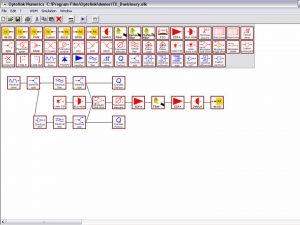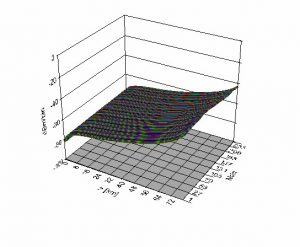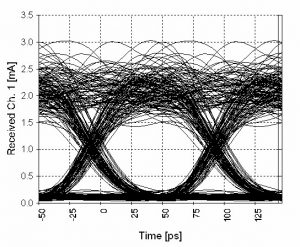
 Optolink Numerics is a numerical tool for analyzing, evaluating and designing WDM optical transmission systems, MAN and WAN fiber networks and free-space optics.
Optolink Numerics is a numerical tool for analyzing, evaluating and designing WDM optical transmission systems, MAN and WAN fiber networks and free-space optics.
The simulation tool runs on Personal Computers with Windows operating system.
Optolink Numerics is offered as a shareware to Universities, PhD students, research foundations and governative R&D departments.
Optical devices and fiber models used by Optolink Numerics are known to be among the most accurate and fast executable in the literature. In order to obtain the fastest computational times, the Optolink Numerics simulation engine was written in Fortran source code, with optimized numerical routines; simulation tasks are launched independently from the graphical tools, and are particularly efficient in terms of computational efforts consuming. Thanks to the accurate modeling of the optical nonlinear effects, such as the Cross-Phase Modulation (XPM), and to the reduced execution times, Optolink Numerics is optimized for simulating Wavelength Division Multiplexing (WDM) transmission systems, with a large number of channels and/or simulated bandwidth.

New Optolink Numerics features include:
a drag and drop graphical interface to let users quickly and intuitively create and modify complex systems to be simulated,
- custom transmitters and components integration,
- custom in-line and de-multiplexing optical filtering,
- optical monomodal fibers with Kerr and Raman nonlinearities,
- fibers with Raman gain and up to 10 co/counter-propagating pumps,
- multimodal fibers with user-defined differential-mode delay,
- free-space optics transmission with stored atmosphere models and link availability estimation,
- optical EDFA amplifiers with a new Polarization Hole Burning (PHB) model,

- optical modulators with dual drive design, driven by two independent electrical signals,
- user-friendly optical transmitters and receivers for Intensity Modulation with Direct Detection (IM-DD), Differential Phase Shift Keying (DPSK) and Phase and Intensity Modulation (PhIM) formats,
- optical cross-connects, add&drop and cross-couplers for network simulation at the physical layer,
- laser with direct modulation for simulating access networks,
- polarization control/tracking at the receiver for polarization-multiplexed systems,
- use of averaged runs for faster and more accurate simulations.
The Optolink Numerics simulation engine has been successfully used and tested in several R&D departments of telecommunication companies, universities and research foundations.
Photoneco provides custom components development, integrated with the Optolink Numerics simulation platform. Please contact software@photoneco.com for further information.
After downloading Optolink Numerics.rar (part 1 + part 2, 27 MB), unzip and follow the installation instructions contained in the Readme.pdf file. A license file will be e-mailed to you. License is locked to a single personal computer.
Fees
Photoneco provides free permanent license files for R&D purposes at Universities, PhD students, research foundations and governative R&D departments.
Other private customers may purchase a node-locked license at the following fees:
- 2-month license: € 250
- 6-month license: € 690
- 12-month license: € 1260
- Permanent license: € 1650
License expiration is calculated from the shipping date.
Permanent license does not require an open TCP/IP connection at Optolink Numerics start-up.
Ordering instructions
After the software download and installation, if you wish to obtain a temporary or permanent license, please follow these steps:
- Run the executable “C:\Program Files\Optolink\bin\InstUtility.exe” on the personal computer where Optolink Numerics will be used. Executable will only read the host name, the mother board and the hard disk serial numbers; please copy those data as they appear in the utility. E-mail your data to software@photoneco.com, indicating:
- First and Last name
- Research affiliation
- License shipping e-mail
- Host name
- Hard disk serial number
- Mother board serial number
- Your comments.
- A “license.dat” file will be e-mailed to you for a single personal computer, corresponding to the ordered license duration.
- Paste the new “license.dat” file into the “C:\Program Files\Optolink\bin” directory.
Universities, PhD students, research foundations and governative R&D institutions may obtain a free permanent license by submitting an e-mail pertaining to their departments and professional information.
Private customers not belonging to the categories above may purchase a license choosing the desired duration and contacting directly software@photoneco.com.
For any further information, please write to software@photoneco.com.
